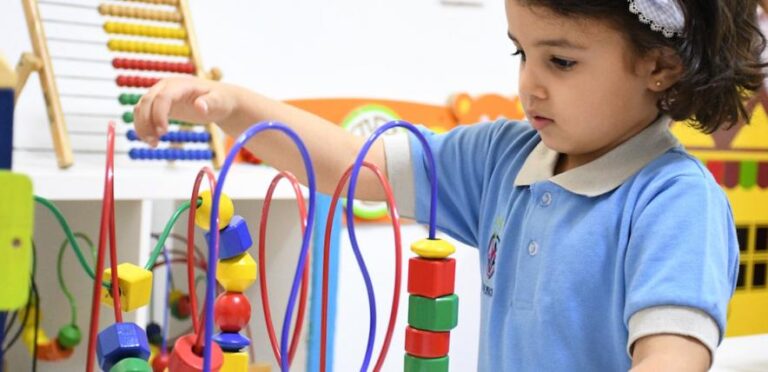Staying safe
If you’ve thought about passing the ‘stranger danger’ messages you learned as a child on to your own offspring, think again. A lot has changed in recent years about the way children are taught about the potential dangers posed by other people, and about the best ways to keep themselves safe.
All of us have to interact with strangers throughout our daily lives. Being able to talk comfortably and confidently with people we don’t know is vital to forming friendships and relationships; it’s an essential part of shopping, travelling or eating out; it enables us to get help if we are lost or hurt. ‘Don’t talk to strangers’ is not a realistic or helpful message to give children, nor a positive one for society.
The sad truth – and another reason why child safety charities have turned their back on the blunt ‘stranger danger’ message – is that children are at far more risk of harm from people they know than from strangers. In over 90 per cent of cases of sexual abuse of children, and 80 per cent of child abductions, the perpetrator is someone known to the victim, according to the charities NSPCC and Kidscape.
A further difficulty is that children of all ages find it hard to define what a stranger is. Research by Kidscape and others reveals that young children typically think of a stereotypical ‘baddie’ – a sinister, ugly man in dark clothes and perhaps a mask. It won’t occur to them that a kind woman, cool teenager or smart young man could be a threat.
The ‘uh-oh feeling’
If ‘stranger danger’ isn’t the message to give our children, then what is? The charity Action Against Abduction (formerly PACT) advises helping children to identify and avoid dangerous situations and to trust their instincts. In the US, the Safety Show teaches a similar message to pre-schoolers, encouraging them to recognise the ‘uh-oh feeling’ when they feel ill-at-ease – whether with a stranger, a known adult or even a friend.
‘You’re the boss of your body’ is another vital message that even very young children can understand. Teach your child that it’s up to them to choose who can touch them and where, and that the parts covered by pants are for them alone. Let your little one decide what level of physical intimacy they’re comfortable with when with family and friends – never force them to kiss or hug anyone or sit on someone’s lap.
When you’re out and about, point out safe adults whom your child could ask for help if ever they are lost or in difficulty – shop checkout workers, staff in public buildings (such as libraries or rail stations), police or community support officers, for instance. At home, be aware of internet safety – these days ‘stranger danger’ may be a greater threat online than on the streets. If you don’t feel your child is old enough to travel on a train alone, don’t allow them to use the internet unsupervised either.
Dealing with danger
What if the worst should happen, and your child finds themselves in a situation where they feel unsafe with someone? Kidscape advocates teaching children to ‘Yell, Run, Tell’ – shout “no” or “stop” as loud as they can, run to a place with safe adults (perhaps a shop, school or petrol station) if they can, and tell someone as soon as possible.
A recent study of 78 attempted abductions of children by strangers, carried out by the Centre for the Study of Missing Persons, shows that this is good advice. Victims who shouted out, ran away or called for help were less likely to be taken. Children who fought their assailant (far more common among girls than boys), were at greater risk of having violence used against them. Polite behaviour, such as making excuses not to go with a would-be abductor, was also ineffective. The study found that a combination of ‘yell, run, tell’ is by far the most successful method of resisting abduction.
Action Against Abduction suggests that role-paying resistance techniques with your child is more effective than simply explaining. Run through various scenarios together. Most of us were taught not to accept sweets from a stranger or get into a car with anyone we don’t know – which is still good advice. But how would your child respond if a stranger asked them to help find a lost dog or a missing child, or to pick up some dropped groceries? Children whose inclination is to be obedient and helpful to adults can find it hard to know how to react.
The thought of a stranger abducting and harming your child is every parent’s worst nightmare. The tragic cases of Sarah Payne, Jamie Bulger, April Jones and others linger long in the media and in our collective memories, heightening our perceptions of the risks to our own children. It’s important to keep things in perspective and to remember that cases such as these are extremely rare. Home Office statistics show that, on average, fewer than nine children under 16 are murdered by a stranger each year (not all of them abducted) – and there has been no significant upward or downward trend since records began in the 1970s. In fact children aged five to 14 have a far lower homicide risk than any other age group.
The best we can do for our children is to encourage them to be confident and assertive, not fearful, help them to recognise when something doesn’t feel right, and give them coping strategies for risky situations – whether in the home, in public or online.
Further information
- Action Against Abduction: www.actionagainstabduction.org
- Missing Persons Group: https://www.port.ac.uk/research/research-centres-and-groups/missing-persons-group
- CEOP Command: https://ceop.police.uk
- Kidscape: www.kidscape.org.uk
- NSPCC: www.nspcc.org.uk/preventing-abuse/keeping-children-safe/staying-safe-away-from-home/
Written for the Early Years Alliance by Elyssa Campbell-Barr








